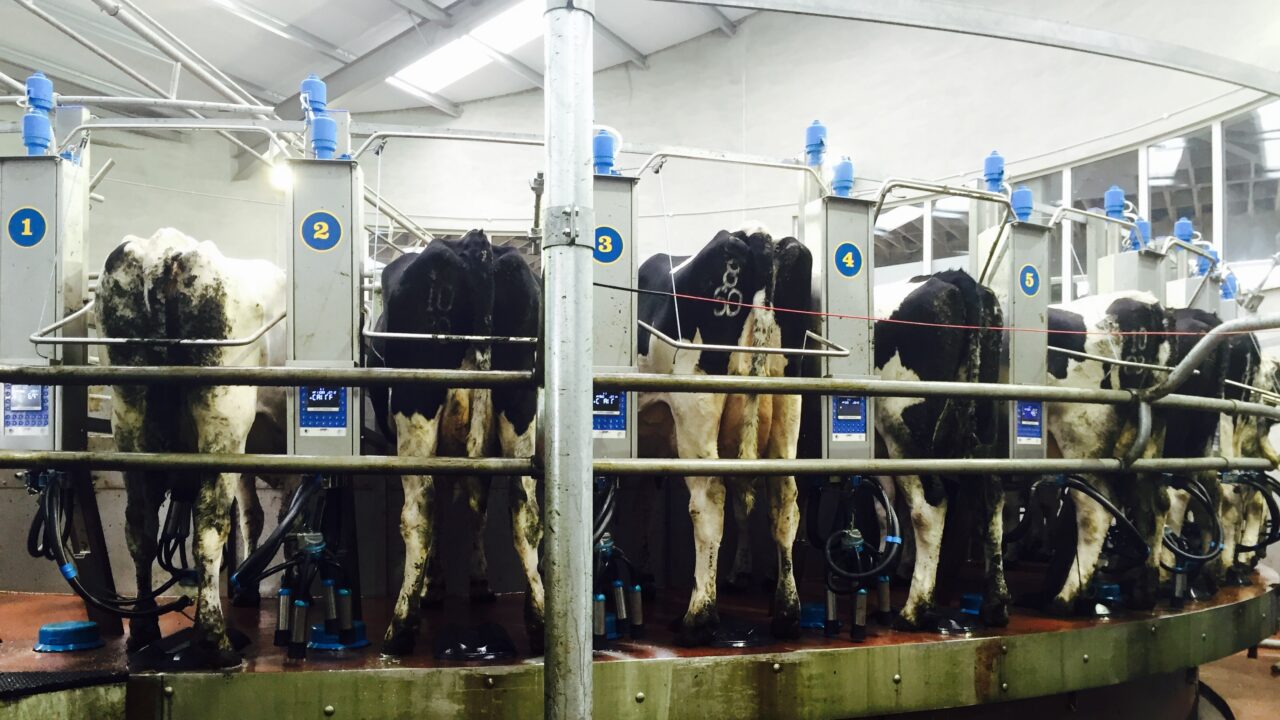Mastitis can be a costly problem. A straight forward, clinical case costs around €150-200, without taking into account the loss of milk over the remainder of the lactation.
Earlier today (November 29), Aideen Kennedy, who completed her PhD in Teagasc Moorepark, presented some of the findings of her research work at the Teagasc National Dairy Conference.
Kennedy said: “There’s been massive improvements in mastitis levels in Ireland. This is due the co-ordinated efforts of vets, farmers and advisors – all working together – to offer the best advice.
60% of herds are now recording annual average somatic cell counts of below 200,000.
“With this improvement in national udder health, we are now in a position where many of our cows are uninfected at drying off. This is leading us to question whether blanket dry cow therapy (BDCT) is actually required.”
Irish dairy herds generally employ BDCT and administer long-acting antimicrobials into all quarters of all cows at drying off. But, as a result of the favourable trends mentioned above, it has been suggested that ‘blanket’ treatments are no longer required.
What is selective dry cow therapy?
Unlike BDCT – where all cows receive antibiotics – selctive dry cow therapy (SDCT) involves the targeted use of antibiotic treatment, only in those cows shown to have an intra-mammary infection at drying off.
However, she warned that strict hygiene is essential in the administration of teat seal; failing to thoroughly disinfect the teats could allow the accidental introduction of bacteria, which could have disastrous consequences for mastitis control.
Research work
She added that a research trial to investigate the potential of SDCT is currently on-going at Teagasc Moorepark.
The SDCT trial was run in the Clonakilty research herd across 2015 and 2016 and was repeated in the Clonakilty, Moorepark and Curtins research herds in 2017.
At drying-off, cows were deemed eligible for inclusion if their SCC had not exceeded 200,000 and they had not presented with a clinical case of mastitis throughout the previous lactation.
To determine somatic cell count (SCC) and bacteria present, quarter sampling was conducted at drying off (pre-treatment) and at multiple dates post calving.
Across the three years of the study, 35 cows were found to have an infection at dry-off, during treatment administration. Weekly post-calving milk recording data provided additional SCC measurements, she said.
Does it actually work?
The initial results, Kennedy said, indicate that the SCC of teat seal only cows was greater than those cows that received both antibiotic and teat sealants.
Teat seal only cows were 2.9 times more likely to have an SCC reading >200,000 within the first 120 days of lactation. However, the majority of cows (>80%) in both treatments maintained SCC <200,000 as indicated in the the graph below.
The difference between the two groups, she said, was in the order of 26,000 somatic cells.
Within the first two weeks of lactation, 5.7% of the quarters of cows given teat seal only were infected with bacteria; compared to 2.1% of quarters of cows given antibiotic and teat seal.
“All herds have maintained a bulk tank SCC <200,000 throughout the study-to-date (one herd recorded a bulk tank SCC of 243,000 in February 2017), indicating that using teat seal only did not impact at the herd level.”
Would it suit my herd?
Concluding, Kennedy said: “Herds with bulk tank somatic cell counts below 200,000, with a <2% clinical case rate in the three months prior to dry-off and with routine individual cow milk recording data available, may consider SDCT.”

